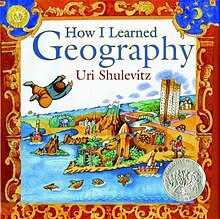
Isaac Bashevis Singer was a Polish-born Jewish-American novelist, short-story writer, memoirist, essayist, and translator. Some of his works were adapted for the theater. He wrote and published first in Yiddish and later translated his own works into English with the help of editors and collaborators. He was awarded the Nobel Prize for Literature in 1978. A leading figure in the Yiddish literary movement, he was awarded two U.S. National Book Awards, one in Children's Literature for his memoir A Day of Pleasure: Stories of a Boy Growing Up in Warsaw (1970) and one in Fiction for his collection A Crown of Feathers and Other Stories (1974).
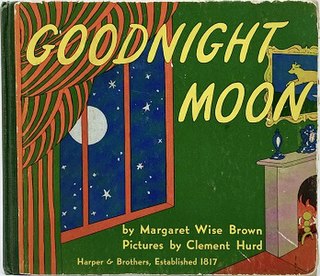
Goodnight Moon is an American children's book written by Margaret Wise Brown and illustrated by Clement Hurd. It was published on September 3, 1947, and is a highly acclaimed bedtime story.

Kate Seredy was an American writer and illustrator of children's books. She won the Newbery Medal once, the Newbery Honor twice, the Caldecott Honor once, and the Lewis Carroll Shelf Award. Most of her books were written in English, which was not her first language. Seredy seems to be unknown in her native Hungary, despite the fact that her story of the Good Master, and the sequel set in World War I are intensely about Hungary.
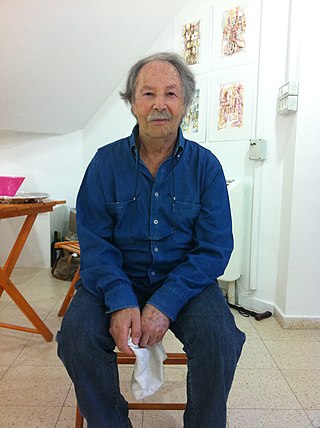
Uri Orlev born Jerzy Henryk Orłowski, was a Polish-born Israeli children's author and translator. He received the Hans Christian Andersen Award in 1996 for his "lasting contribution to children's literature", the Prime Minister's Prize for Hebrew Literary Works in 1972 and the Bialik Prize for literature in 2006.

Lois Lenore Lenski Covey was a Newbery Medal-winning author and illustrator of picture books and children's literature. Beginning in 1927 with her first books, Skipping Village and Jack Horner's Pie: A Book of Nursery Rhymes, Lenski published 98 books, including several posthumously. Her work includes children's picture books and illustrated chapter books, songbooks, poetry, short stories, her 1972 autobiography, Journey into Childhood, and essays about books and children's literature. Her best-known bodies of work include the "Mr. Small" series of picture books (1934–62); her "Historical" series of novels, including the Newbery Honor-winning titles Phebe Fairchild: Her Book (1936) and Indian Captive: The Story of Mary Jemison (1941); and her "Regional" series, including Newbery Medal-winning Strawberry Girl (1945) and Children's Book Award-winning Judy's Journey (1947).

Marguerite de Angeli was an American writer and illustrator of children's books including the 1950 Newbery Award winning book The Door in the Wall. She wrote and illustrated twenty-eight of her own books, and illustrated more than three dozen books and numerous magazine stories and articles for other authors.

Allen Say is a Japanese-American writer and illustrator. He is best known for Grandfather's Journey, a children's picture book detailing his grandfather's voyage from Japan to the United States and back again, which won the 1994 Caldecott Medal for illustration. This story is autobiographical and relates to Say's constant moving during his childhood. His work mainly focuses on Japanese and Japanese American characters and their stories, and several works have autobiographical elements.
Uri Shulevitz is an American writer and illustrator of children's books. He won the 1969 Caldecott Medal for U.S. picture book illustration, recognizing The Fool of the World and the Flying Ship, an Eastern European fairy tale retold by Arthur Ransome in 1916.

No, David! is a 1998 children's picture book written and illustrated by David Shannon and published by Scholastic Inc. It follows a young boy named David who is constantly told "No" by his mother. Important themes such as discipline, proper behavior, parental love, and childhood essence are evident throughout this children’s book through words and illustrations. Regardless of the varying receptions from the public, after its original publication, No, David! was recognized with a variety of different awards and honors, and there were many adaptations that were made in the following years based on of this book.
Jack Sendak was an American children's literature author. He was the brother of Maurice Sendak and the son of Philip Sendak.

The Fool of the World and the Flying Ship is a children's picturebook illustrated by Uri Shulevitz that retells an Eastern European fairy tale of the same name. The text is taken from Arthur Ransome's version of the story in the 1916 book Old Peter's Russian Tales; Ransome had collected the folktale when he was a journalist in the Russian Empire. The book was released in 1968 by Farrar, Straus and Giroux and won a Caldecott Medal for illustration in 1969.

Guo Yue is a virtuoso of the dizi and bawu. He was born in Beijing, China. He plays a wide range of the bamboo flute and currently lives in London. He has recorded for Peter Gabriel's Real World label. He is also dedicated to cooking, and has found ways of combining cookery with flute playing at some of his concerts.

Don't Forget the Bacon! is a children's book written and illustrated by Pat Hutchins. It was published by Bodley Head in 1976. The story is about a little boy who tries to memorise a list of groceries his mother has asked him to buy. The book has been used as a teaching tool to instruct children about early learning concepts.
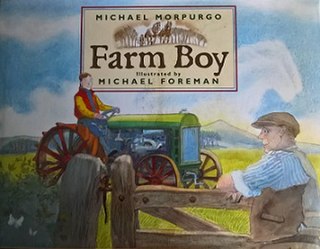
Farm Boy is a British children's novel written by Michael Morpurgo, and illustrated by Michael Foreman. The book is the sequel to the popular novel War Horse. The book was first published in the United Kingdom in 1997 by Pavilion Books. It was republished in 1999 by HarperCollins Children's Book. The novel was adapted into a stage play in 2010.

Finding Winnie: The True Story of the World's Most Famous Bear is a 2015 children's book written by Canadian author Lindsay Mattick and illustrated by Sophie Blackall. The non-fiction book is framed as a story Mattick is telling to her son. Her great-grandfather, Harry Colebourn bought a bear on his way to fight in World War I, donating the bear to a zoo where it became the inspiration for the character of Winnie-the-Pooh. Finding Winnie was thoroughly researched by both Blackall and Mattick. The book's writing and illustrations were well reviewed and it won the 2016 Caldecott Medal.
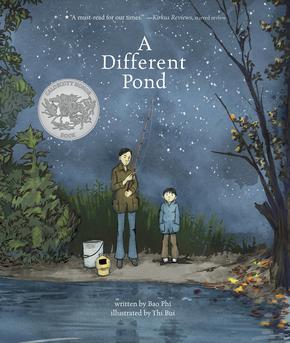
A Different Pond is a 2017 children's picture book by Bao Phi, illustrated by Thi Bui. The book tells the story of a boy and his father going fishing. Phi created the book because of his desire to have books about people like himself to read to his daughter. Bui's detailed illustrations allowed Phi to remove elements of the prose. Bui, who had never illustrated a traditional picture book before, won praise for her use of colors and was recognized with a 2018 Caldecott Honor. The book received positive reviews and appeared on best of 2017 book lists.
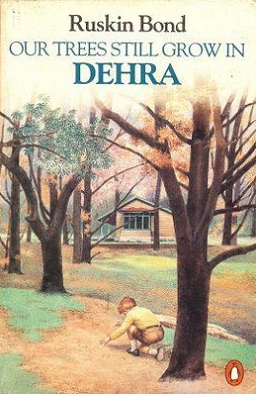
Our Trees Still Grow in Dehra is a collection of 14 short stories written by Ruskin Bond. It was published in 1991. He was awarded Sahitya Academy Award in 1992 for it.

Going Down Home with Daddy is a 2019 picture book written by Kelly Starling Lyons and illustrated by Daniel Minter. It tells the story of a young boy who attends a large family reunion at his great-grandmother's house and struggles to prepare a contribution to the family celebration. Inspired by Lyons's visit to a family gathering in rural Georgia, the book was published by Peachtree Publishing on April 1, 2019. The acrylic illustrations incorporate Adinkra symbols representing various concepts in Ghanaian culture. Critics praised the book's themes of family culture and heritage as well as Minter's illustrations, for which it received a Caldecott Honor in 2020. It also received the 2019 Lupine Award in the Picture Book category.
The Fools of Chelm and Their History is a humorous book by Isaac Bashevis Singer about a fictional town of Chelm inhabited by naive Wise Men of Chelm.
